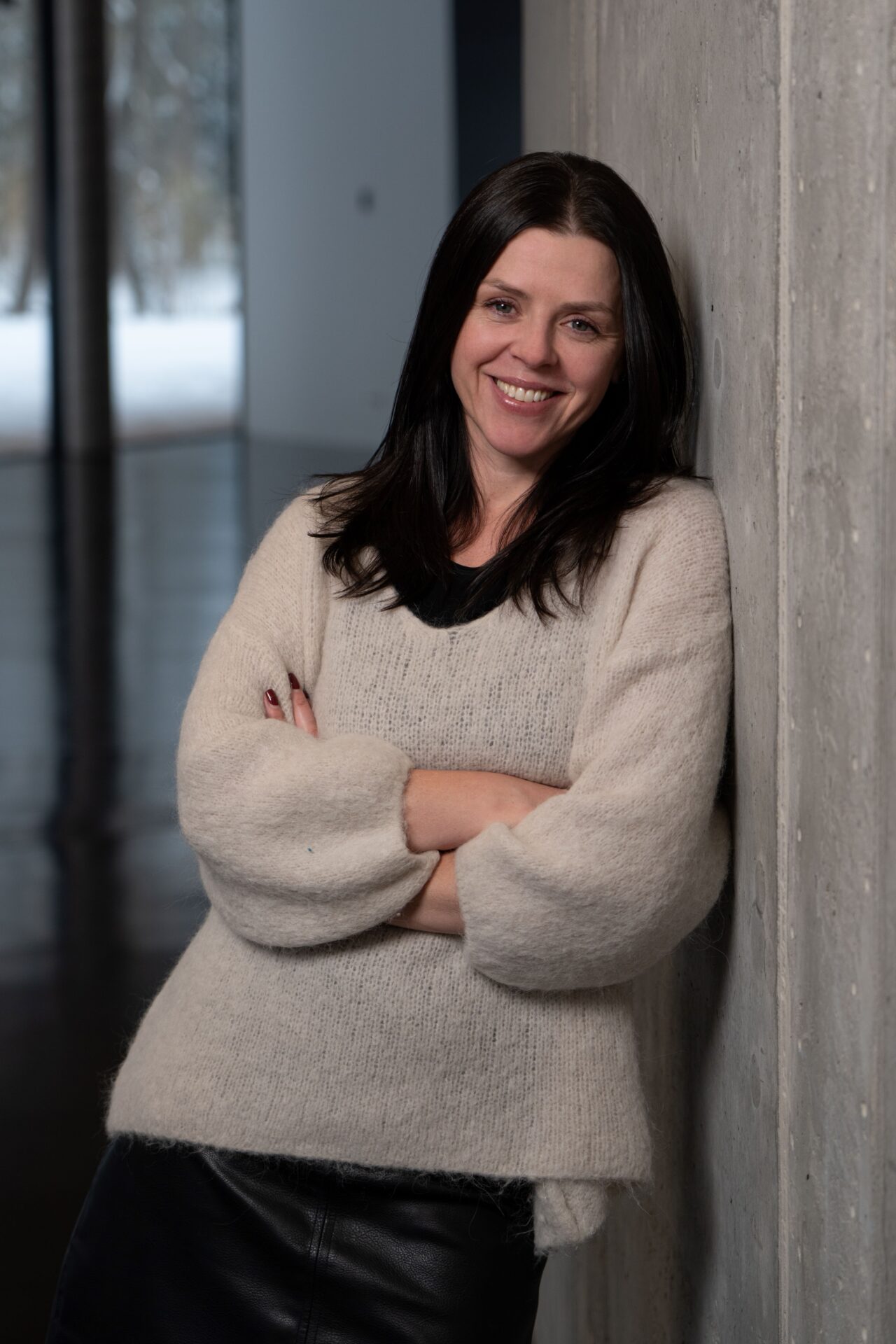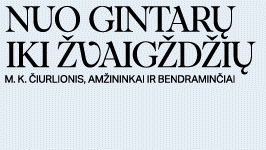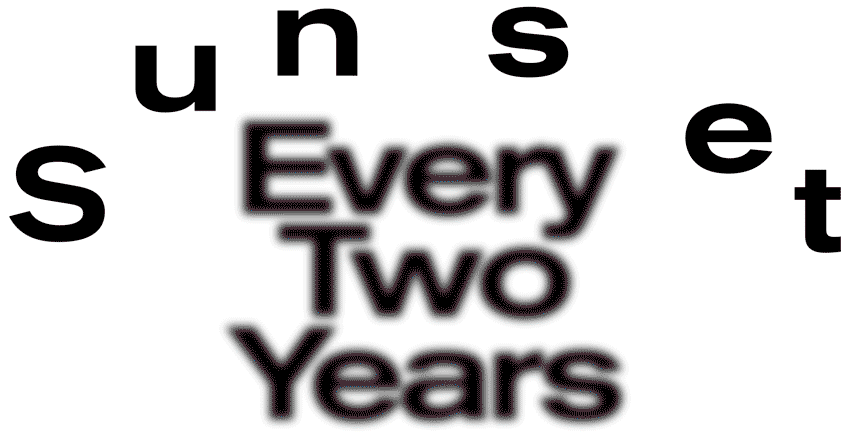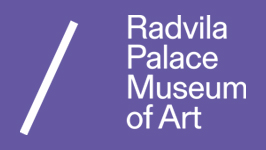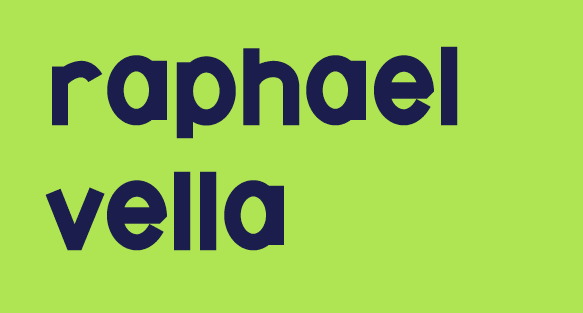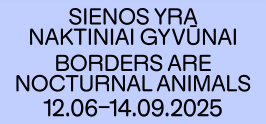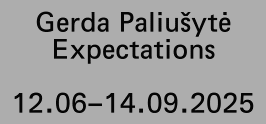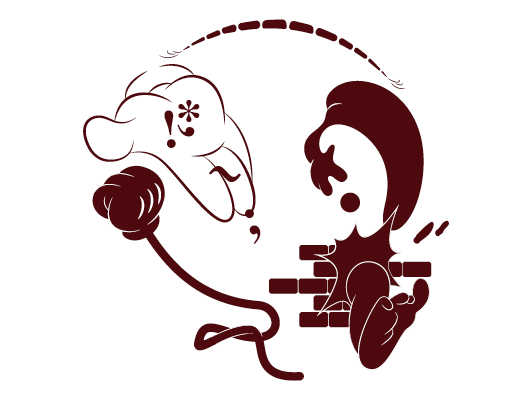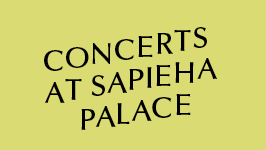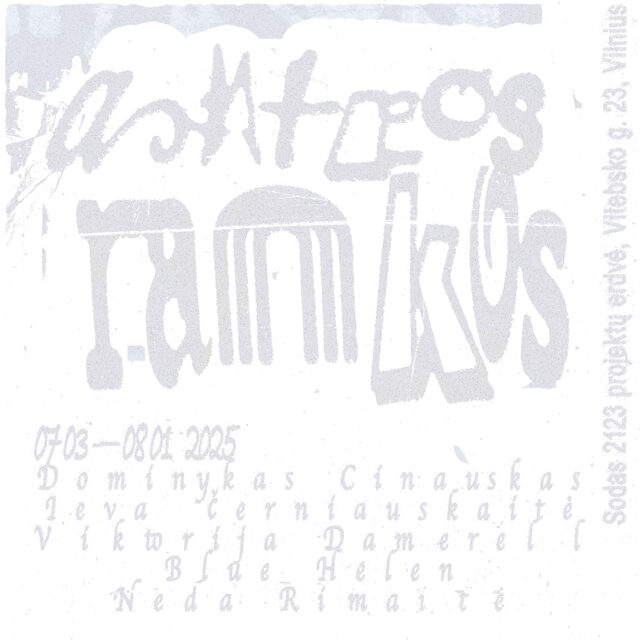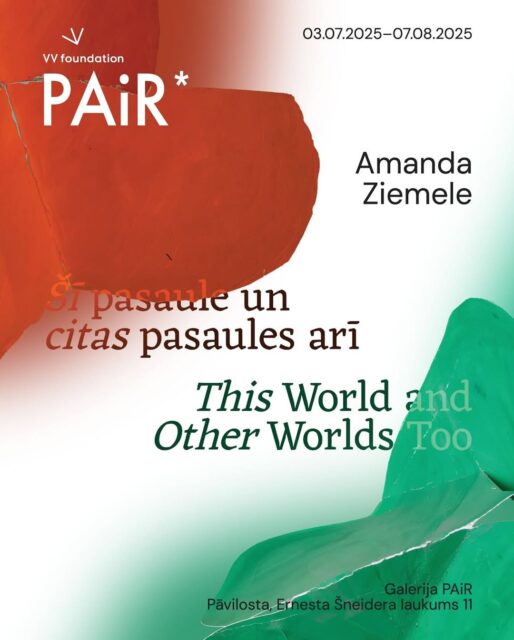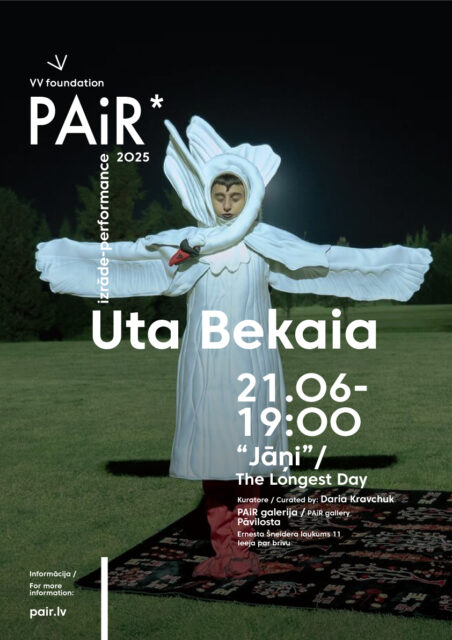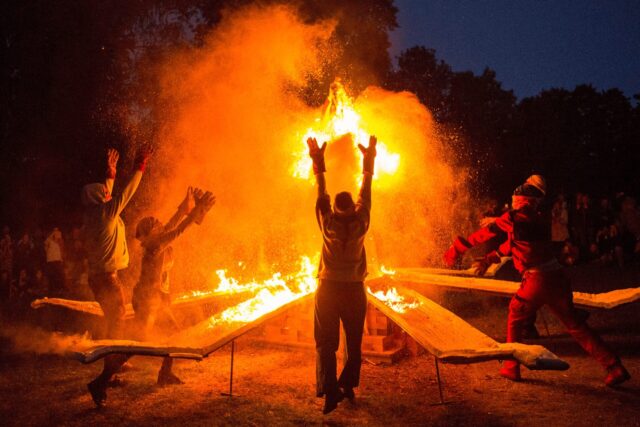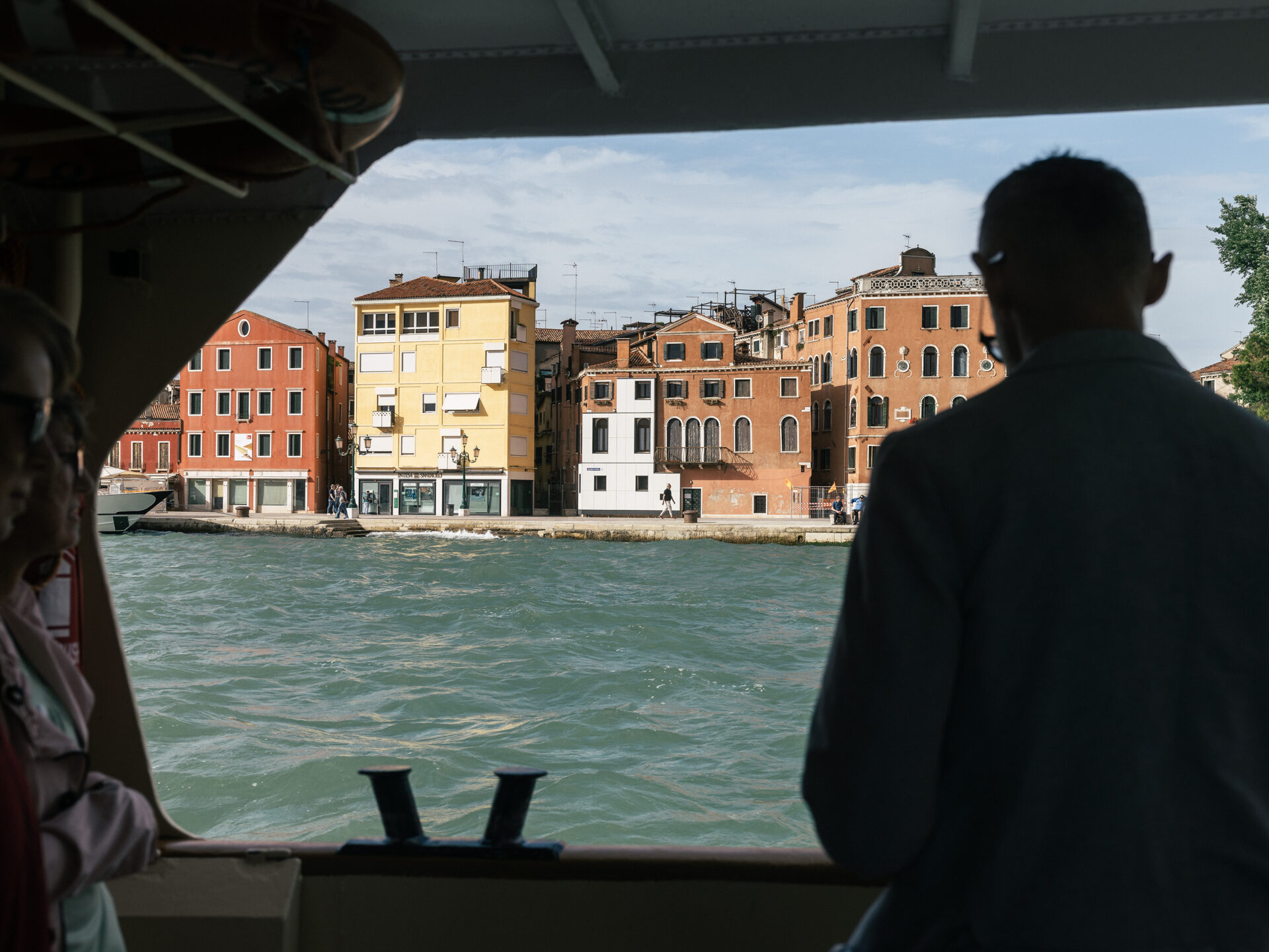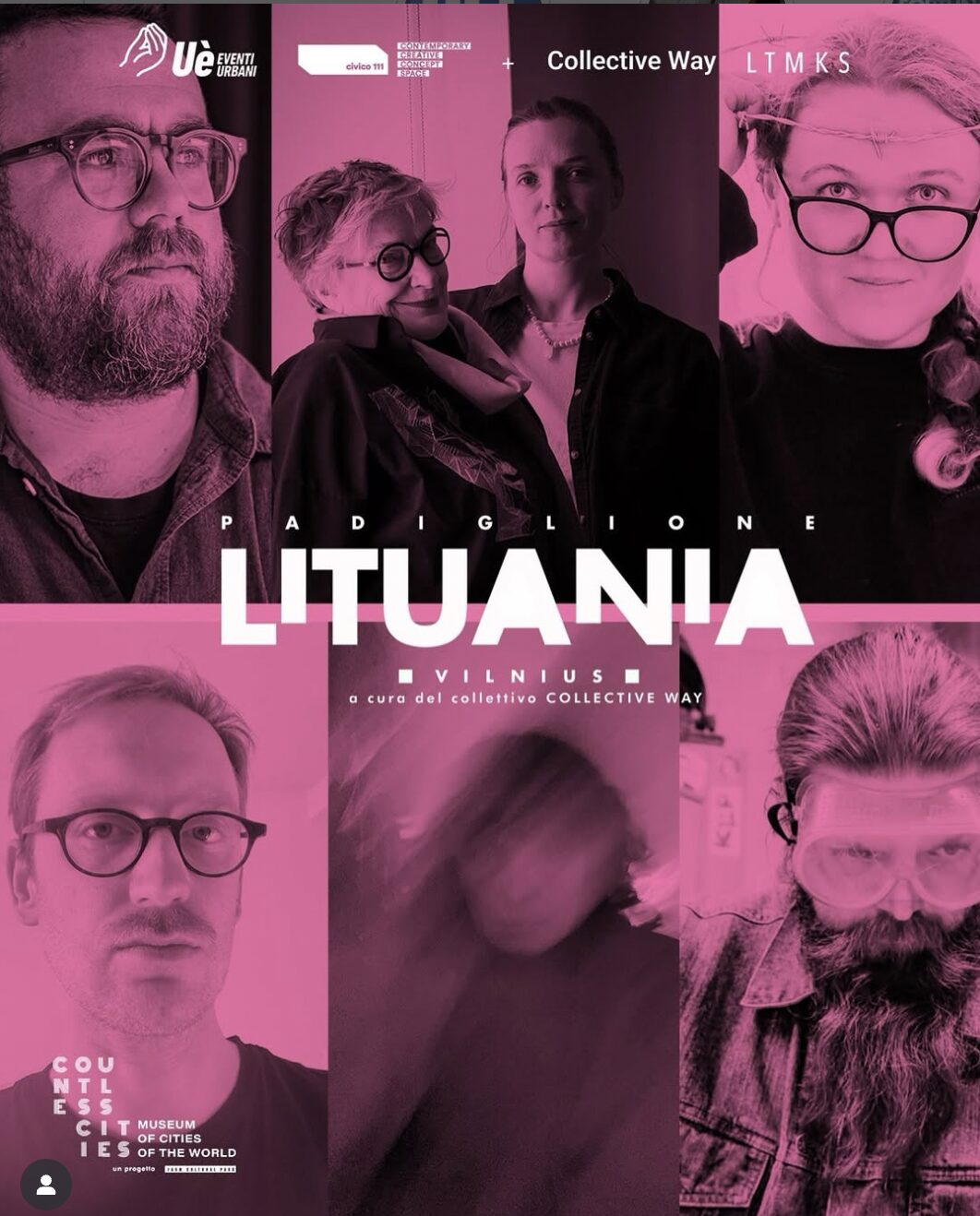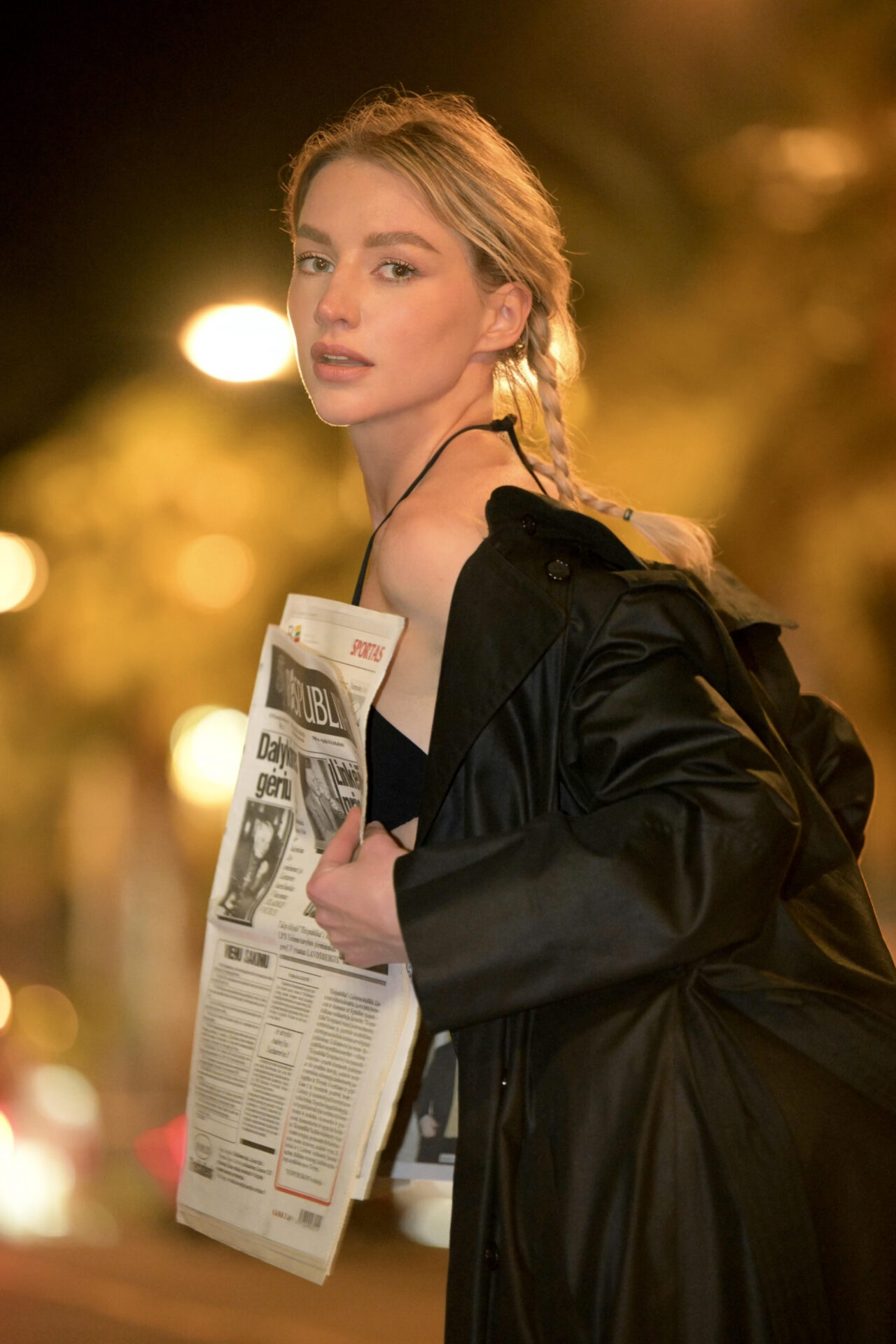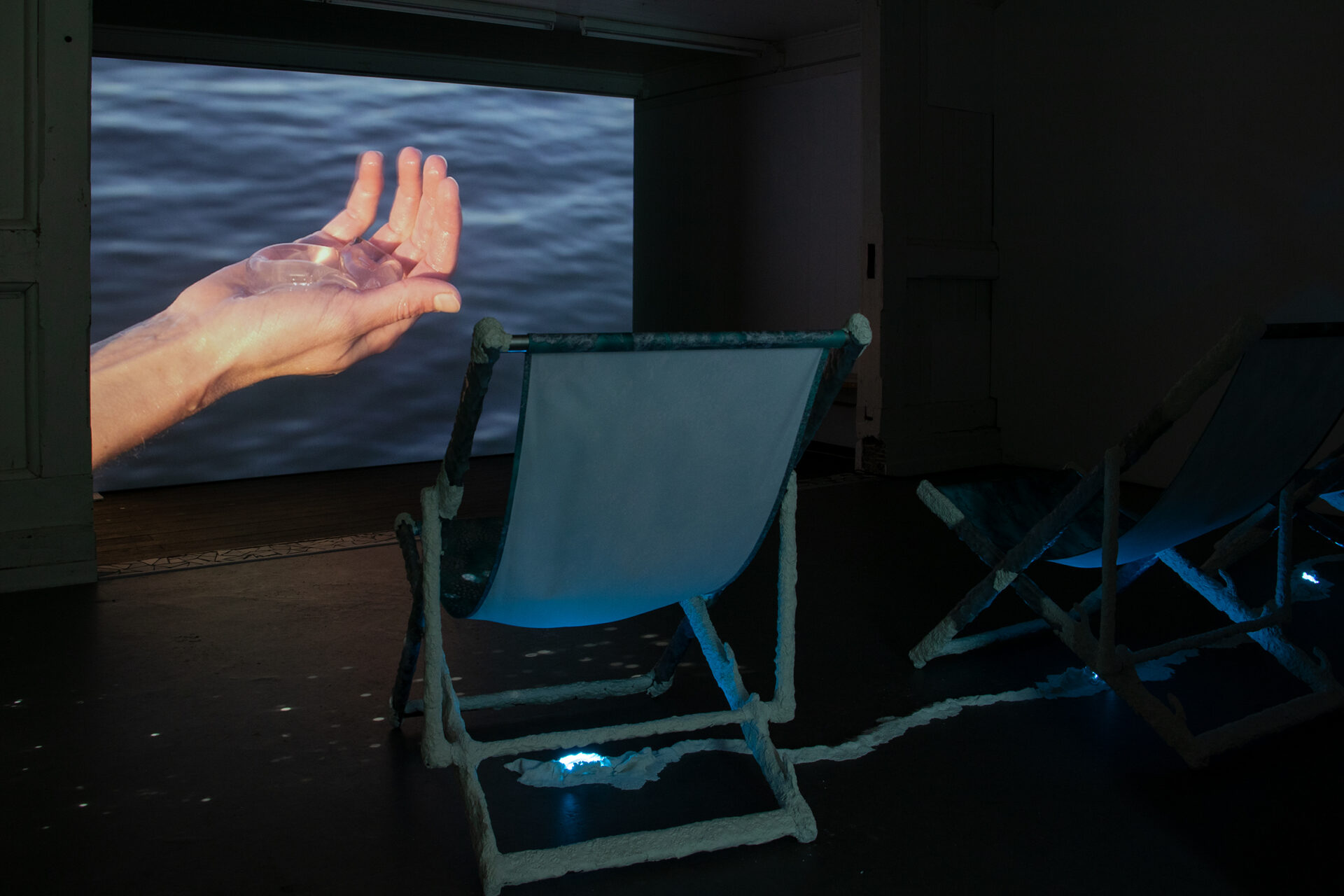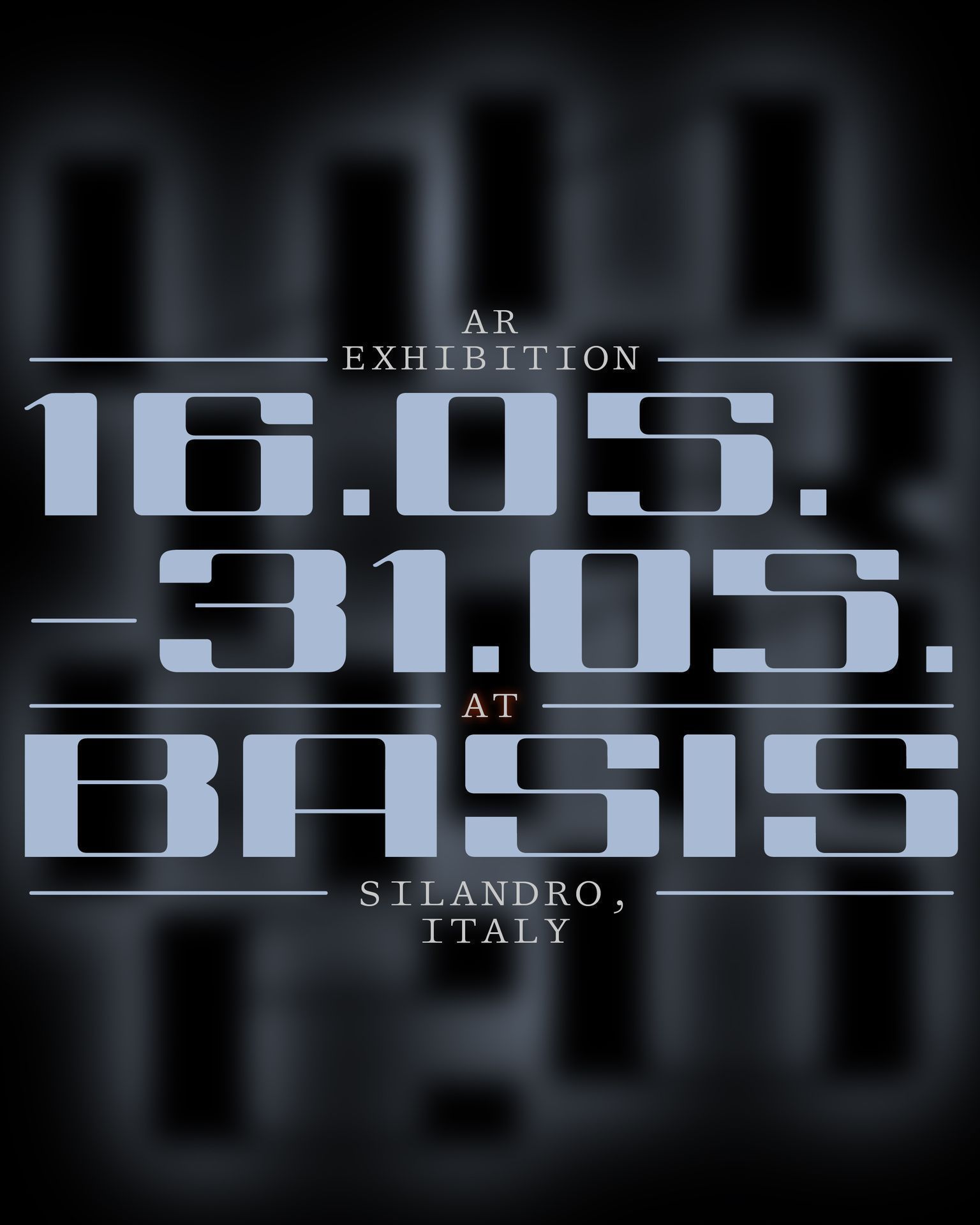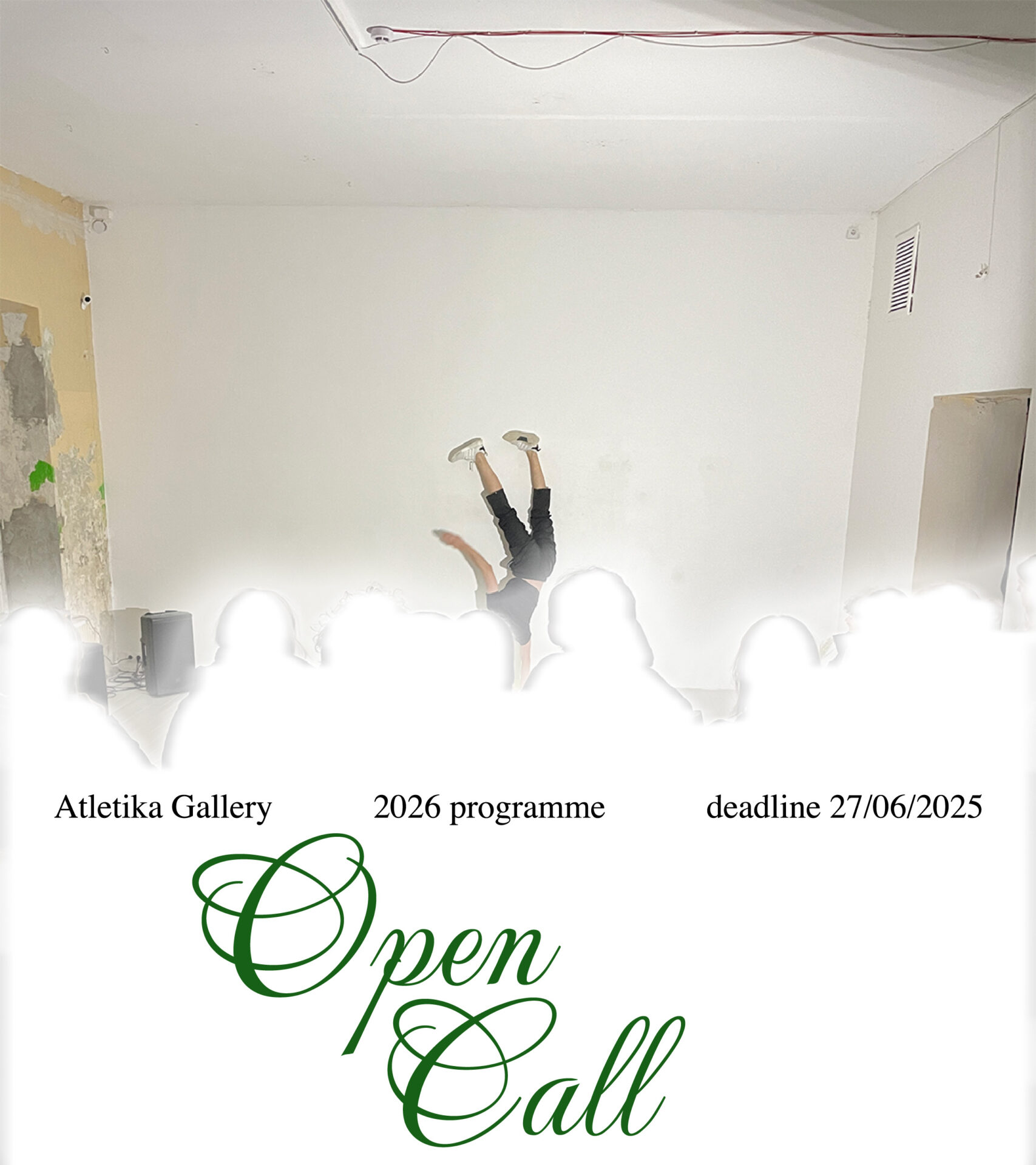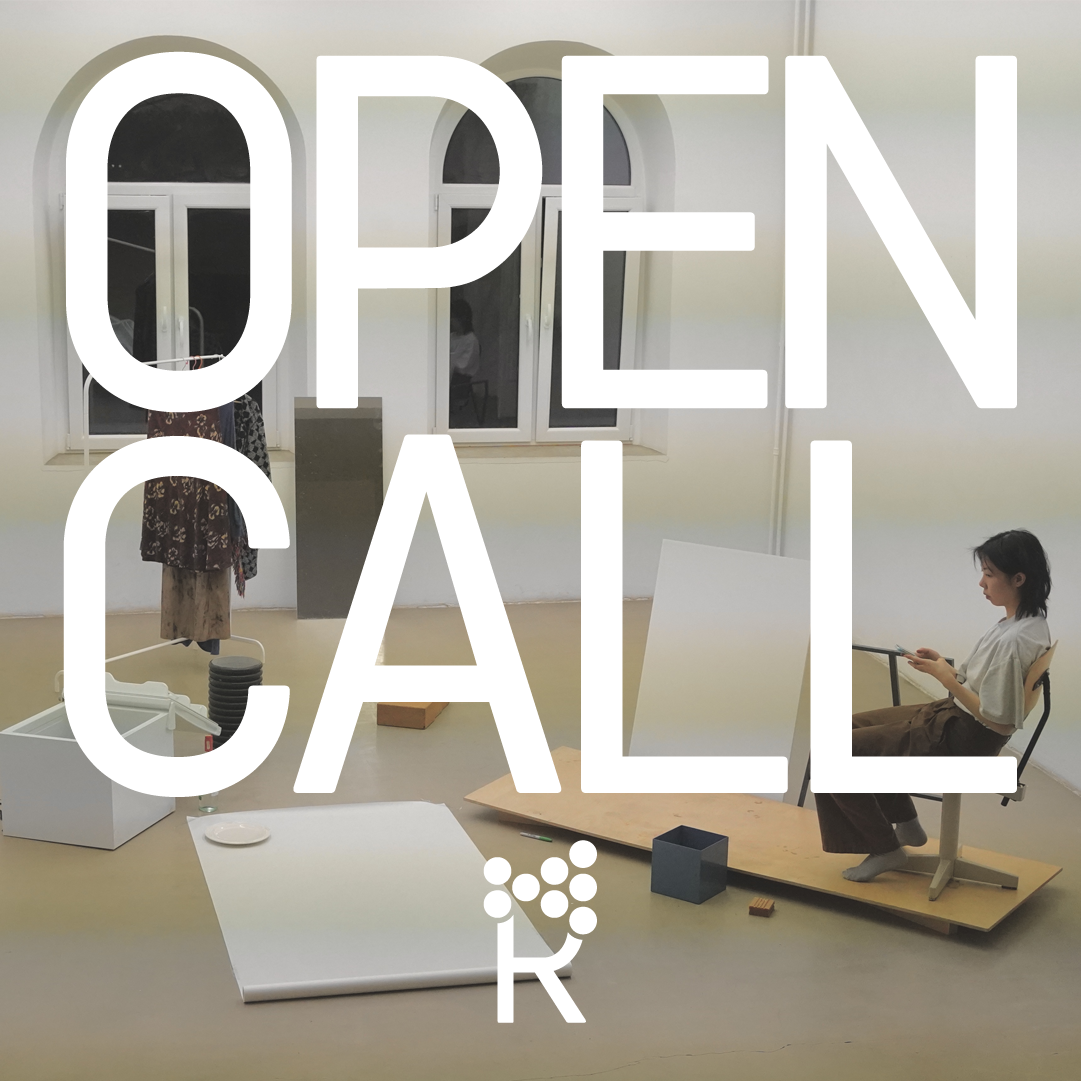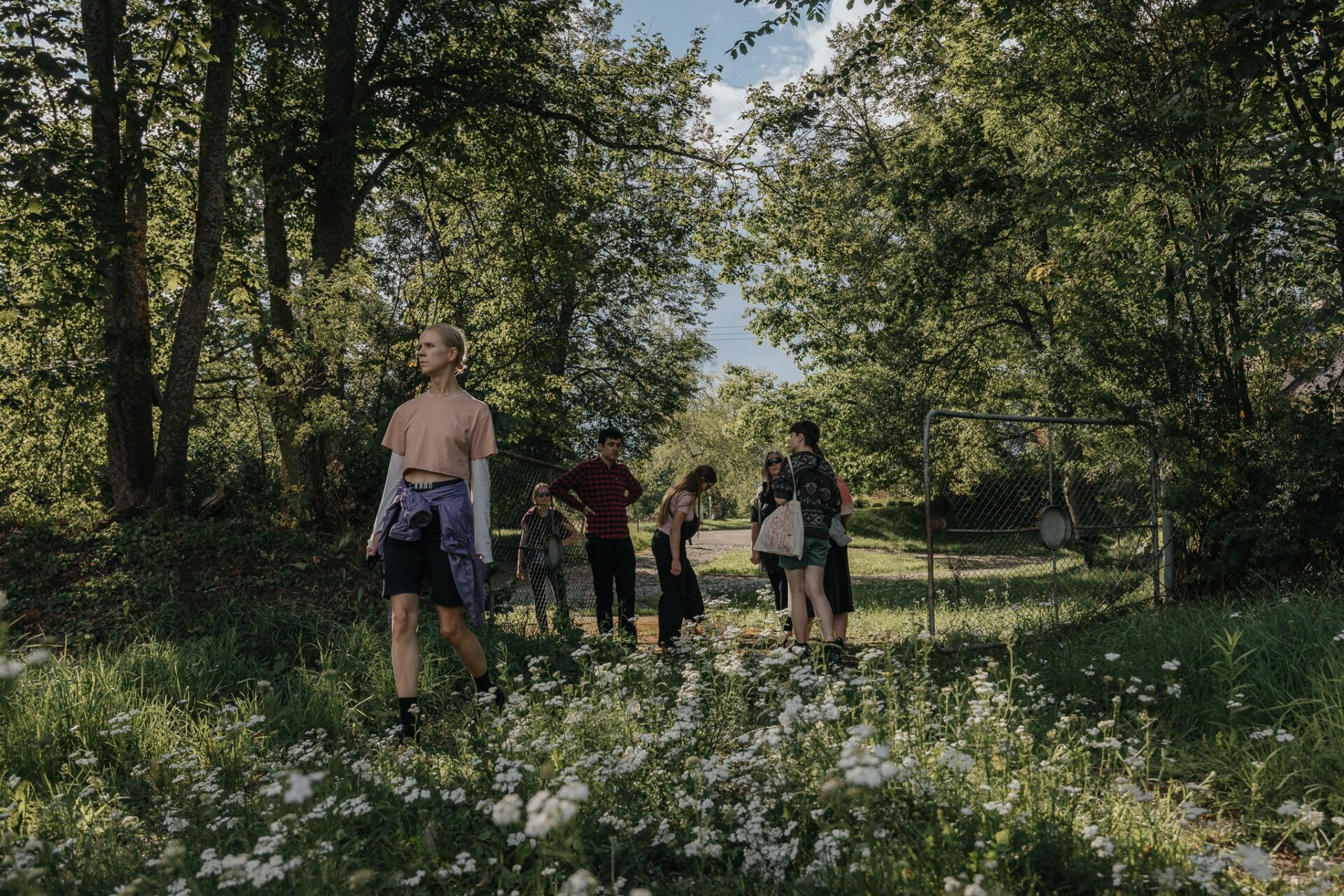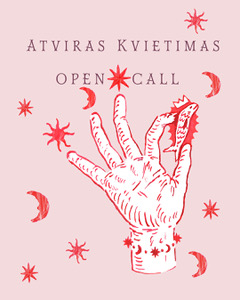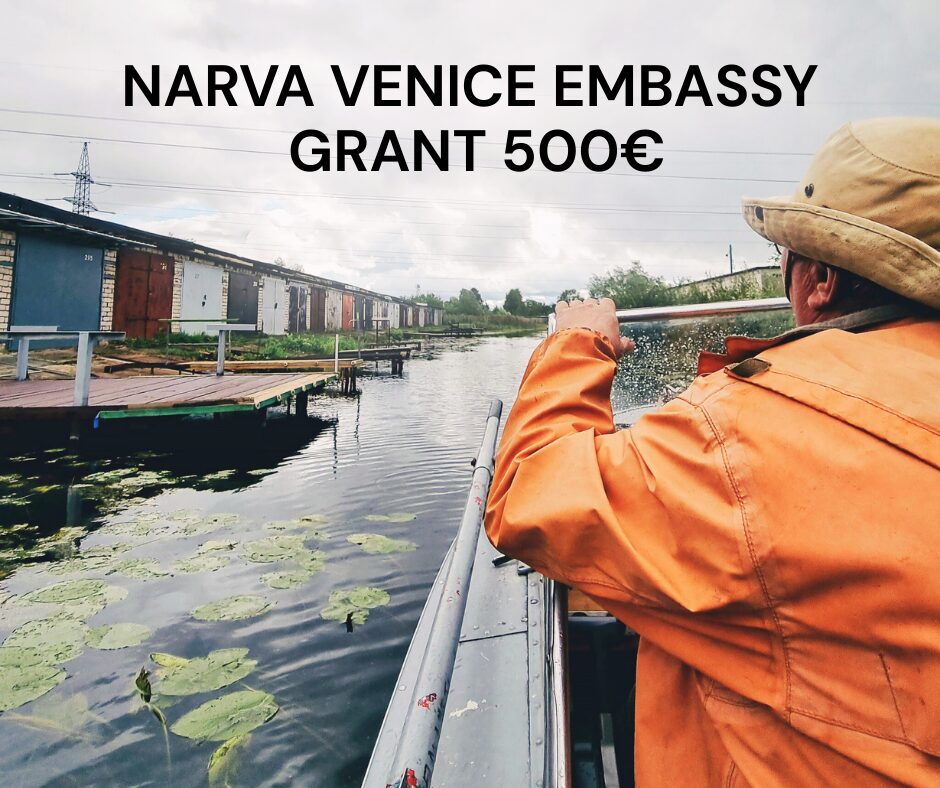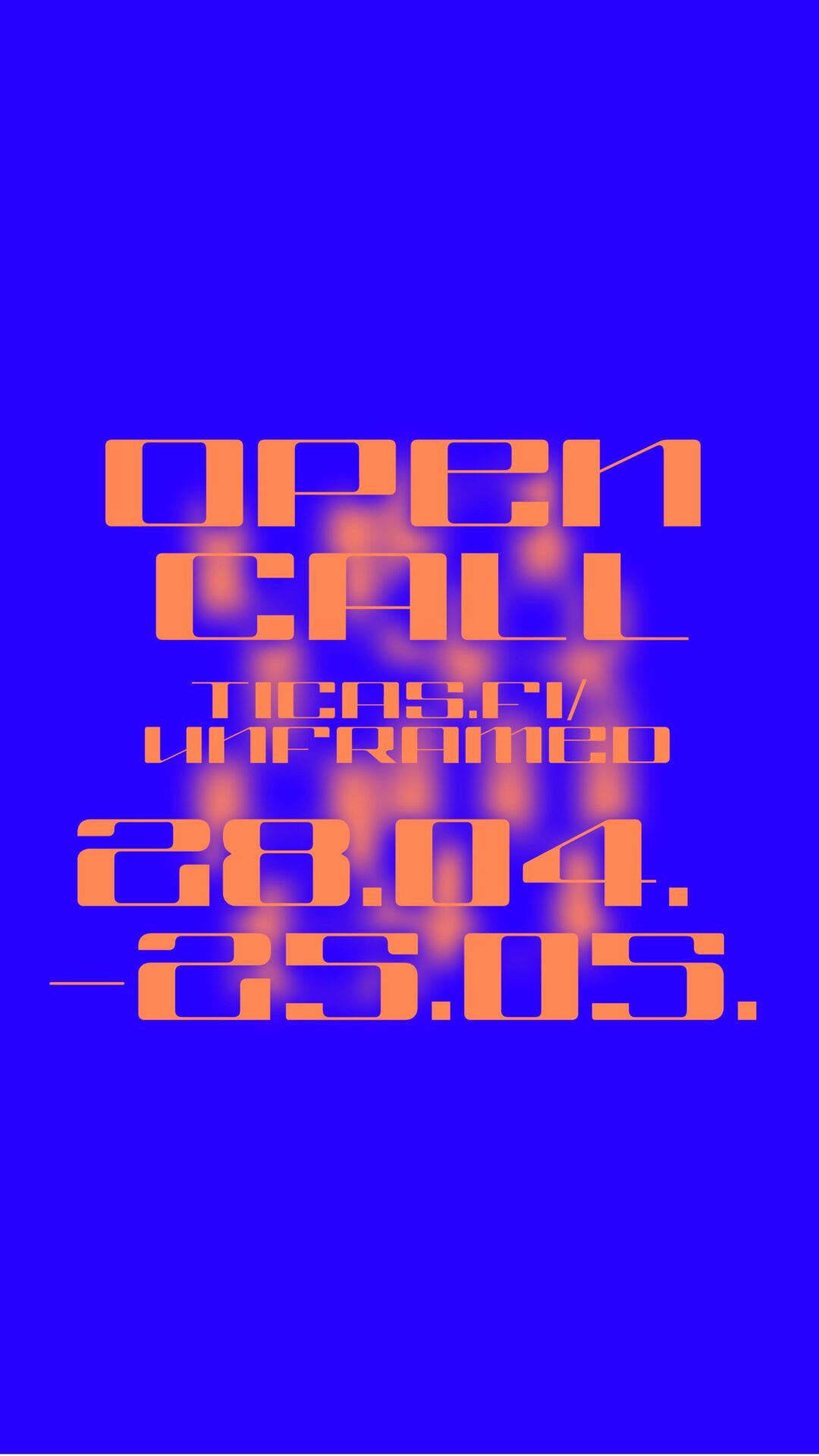At the beginning of this summer, I gave myself a nice gift and visited Panevėžys. One of the best surprises I have given myself recently is visiting cities I have not seen for a long time and do not recognise any more. Panevėžys, which seems to have been somewhat dormant, is gaining momentum, and a day might not be enough to visit all the cultural points. This cultural drive of the city also encouraged me to walk new paths, open museum doors, step over the doorsteps of galleries, and look up to see sculptures, arches, city roofs and the sky looking as beautiful as ever. Maybe the sky is like this because of the Pragiedruliai creativity centre (in Lithuanian pragiedruliai means ‘the clear sky after it has been cloudy’) which has appeared on the map of the city’s cultural activities? This centre is located in Skaistakalnis Park, surrounded by old trees and two rivers, and has become a truly special place, and not only because of its peaceful natural refuge: it combines art, culture and community, and historical and modern architecture, which, by the way, was soon noticed and appreciated. From exhibitions and practical workshops to small community meetings, the Pragiedruliai team has created a space for communication, art and creativity. I spoke with Gita Laurinavičiūtė, the head of the Pragiedruliai centre, about the activities of the centre, the continuity of ideas, and life in Panevėžys.
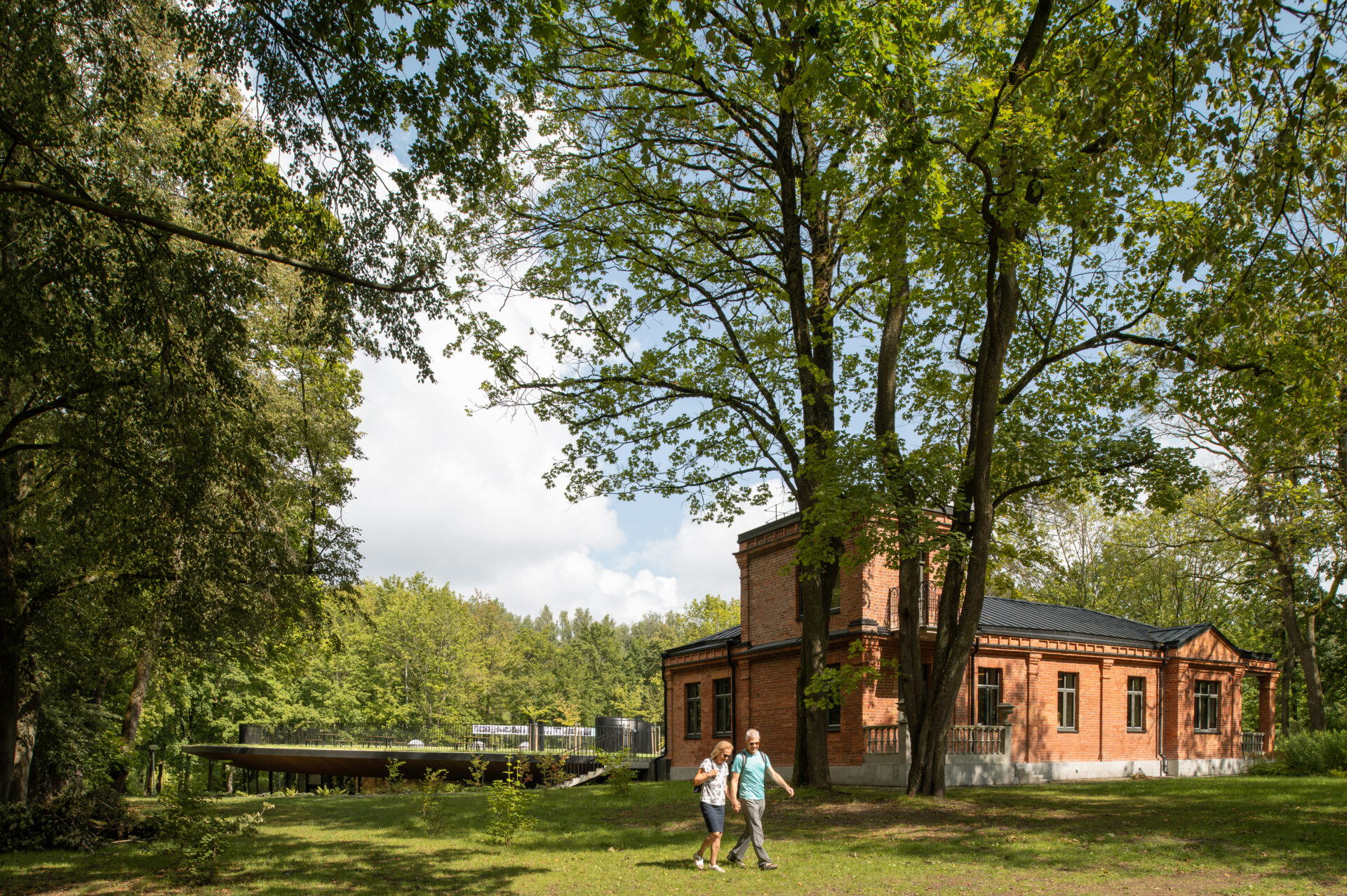
Pragiedruliai creativity centre. Photo: Aistė Rakauskaitė
Agnė Sadauskaitė: Back in the interwar period, Juozas and Jadvyga Čerkesas named their homestead Pragiedruliai, where part of the creativity centre is located today. You have mentioned that the aim of Pragiedruliai is to continue the activities started by the Čerkesas family. Tell us more about it: what ideas does the centre intend to continue?
Gita Laurinavičiūtė: Juozas Čerkesas-Besparnis was a human orchestra: a gardener, theatre actor, war volunteer, writer and lawyer. In the interwar period, in 1926, he built a homestead, which he named Pragiedruliai, and planted the plot where we are now with trees and bushes. The purpose was to create a community, and intelligentsia gathered in the homestead. Before the recent renovation of the park and the homestead, few people knew about this personality, but now more information about him is being found, our knowledge is being expanded, and mostly guides and educators are working on this. However, the homestead and the park were abandoned for a long time, and there was an intention to establish a French-style park in this place. Then the intelligentsia of Panevėžys, some of whom even remember the Čerkesas family from their childhood or from the stories told by their parents, began to promote a different choice, paying tribute to the founder of the homestead. And it was from then that the publicity and brightness of Juozas Čerkesas began; that’s how we create in his house.
The Pragiedruliai cultural centre relies on the inspiration of Juozas Čerkesas-Besparnis and his family to spread humanist values, strengthen the connection with nature, and create a meaningful cultural space for every visitor. In interwar Lithuania, the Čerkesas homestead became a place where creativity, a sustainable relationship with the environment, and a community spirit, were encouraged, values that are still vitally important to our activities. Without community, we would not exist either. We aim to continue these ideas, with a special focus on community involvement, engagement and creative expression, which is one of our missions.
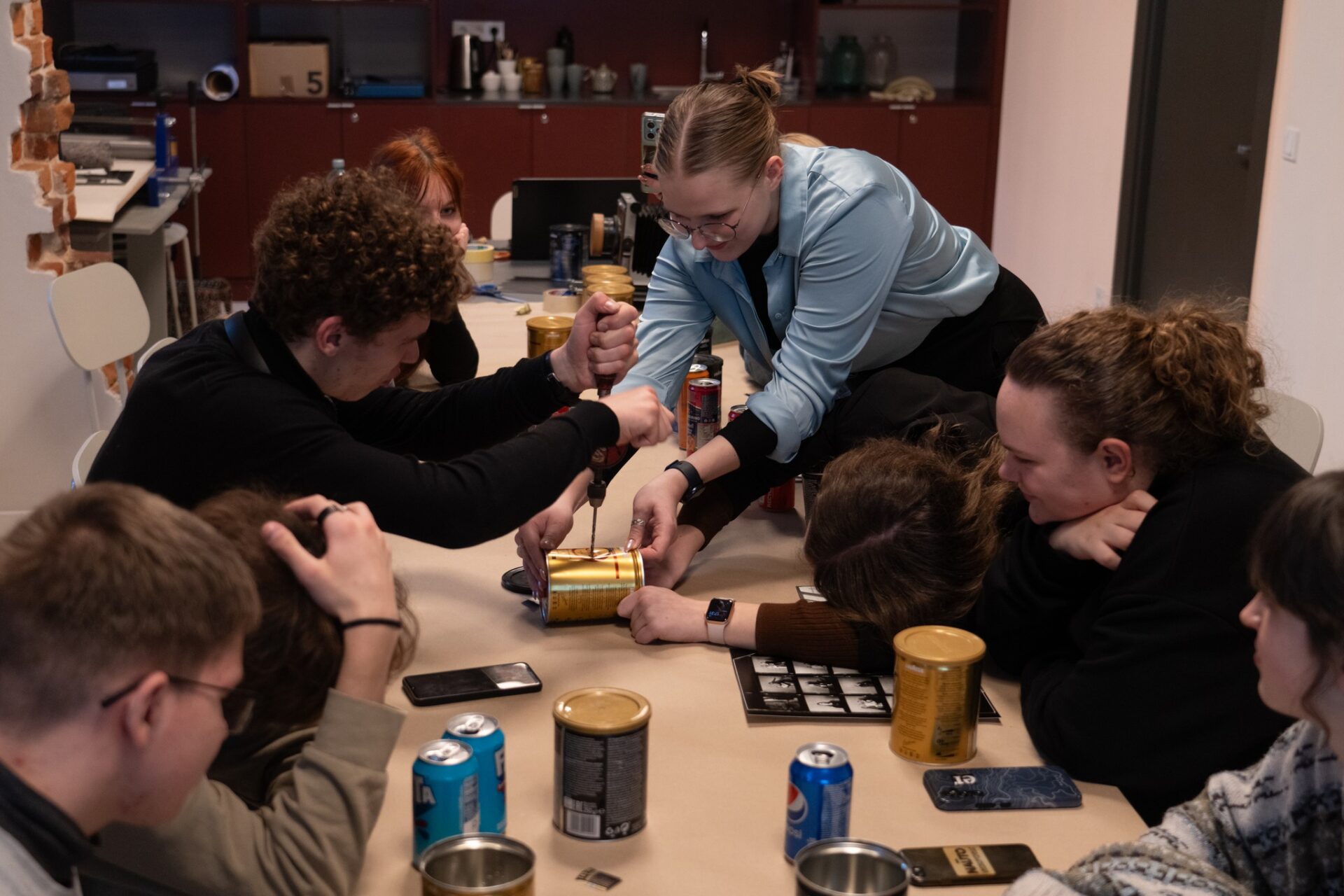
Photo from Pragiedruliai creativity centre archive
AS: What was the impetus for the opening of the centre?
GL: The idea of Pragiedruliai was to offer the local community other creative activities that were not available in Panevėžys until now. The homestead was developed based on fundamental principles to promote community engagement, cultural entrepreneurship, historical and heritage relevance, interdisciplinary communication, adaptability to different studios and residences, and of course, sustainability and ecology.
AS: Indeed, a wide range of cultural activities can be arranged in Panevėžys. When I visited the city a decade ago, it seemed like a few hours was enough; but this year I didn’t manage to visit everything in a day. These include the Panevėžys Art Gallery, the Stasys Museum, the Gabrielė-Petkevičaitė Bitė Library, theatres and galleries. What does Pragiedruliai add to the city’s cultural life?
GL: The map of cultural sites is wide, there is a lot to choose from. Sometimes colleagues from other institutions and I invite each other to events, and often we cannot attend … because we are at another event. Pragiedruliai complements the cultural fabric of the city with a unique creative and community space that combines art, culture and nature. Art is professional, provided by study teachers, invited guests and lecturers. There are five studios where you can choose your discipline, so it is not just a branch of one field. After all, people usually choose one of the studios, the curators, and that’s how we observe how the sustainability and the continuity of the relationship grows.
Not only can visitors participate in various art residences and exhibitions at our centre, but they can also experience the creative process, from the idea to the result. Cultural and artistic dialogue is encouraged. Pragiedruliai aims to create a space where culture is not only observed, but also created and experienced together.
AS: The spectrum of the centre’s activities is extremely wide, and when examining the calendar of events on the website, I quickly noticed that almost all the days are filled with creative initiatives, meetings and workshops: art, textile design, applied theatre, audio-video and photography studios are open every day. Tell us more about these studies.
GL: Each listed studio has one curator who introduces the features of their field. The art studio focuses mainly on creativity and its development. In this studio, you can try your hand at painting, graphics and drawing, and get acquainted with the variety of techniques in these fields. The curator of the photography studio introduces visitors to experiments, and creates many things together. Panevėžys is a city of theatre, and we aim to apply theatrical skills by developing traits that are useful in everyday life. Movement and public speech workshops are conducted in the studio, which through general theatre skills help to release more creativity, and teach you how to present yourself when talking to an audience. We notice that these classes attract the attention not only of young people, students who are preparing for exams, but also older people who are not afraid to express themselves boldly. There is a different approach to the application of textiles in the workshops taking place in Pragiedruliai. Panevėžys is a city of linen, but we wanted to look at textiles a little differently. Various classes are held in this studio: old and new batik, sun stamps-cyanotype, upcycling of old clothes, discussions about the search for one’s own style, sustainability, and harmony as a whole. And if you answer the question ‘Book or movie?’ by choosing the second option, then you already know what to expect from the fifth studio. In it, you can become not only a cameraman, director or producer, but you can also learn how to work in a team, listen to others, and accept different ideas.
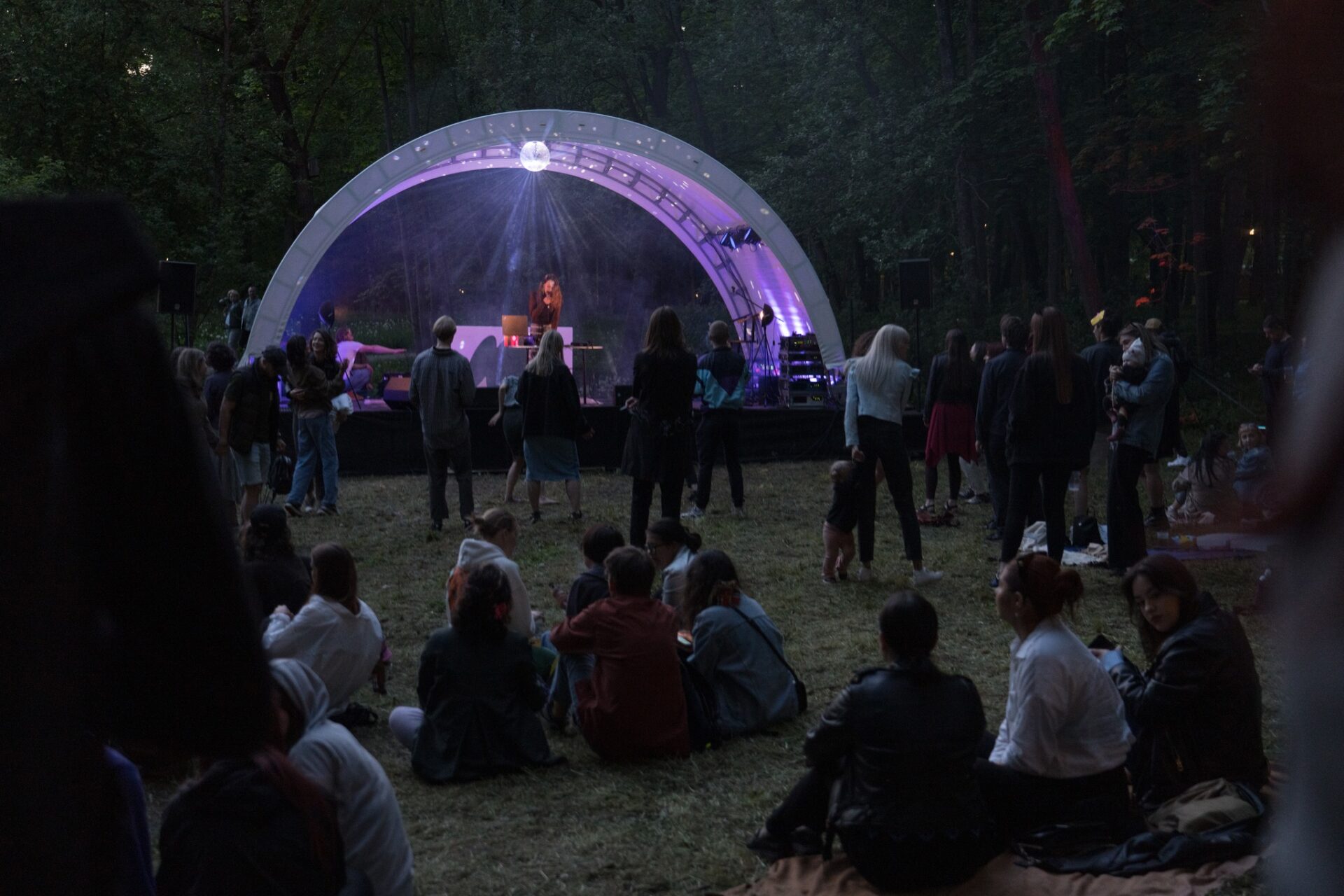
Photo from Pragiedruliai creativity centre archive
AS: How do you generate new ideas every day?
GL: Our ideas are born naturally from the constantly changing creative environment and the needs of the community: we try to respond to expectations and wishes by asking, listening, analysing, and observing what works and where help is needed. I remember one case. Since we are a real ecolodge surrounded by a park and two rivers, far from the hustle and bustle of the city, the curator of the art studio placed easels in the park around the building, and people started painting. Eventually people completely immersed themselves in creation, and the curator calmly observed them from the side, letting ideas flow, instead of offering insights into what is usually the practice in workshops. The next time, natural surfaces were used: all the participants went to the park with a sheet of paper and crayons, and drew on the surfaces of the trees, rocks and grass.
Every member of our team and the guest artists contribute with their experience and ideas, which are transformed into new activities and formats. Some activities are long-term, while others take place at individual events or workshops, so everyone can choose the level of commitment according to their needs. Most of the activities are completely free, and almost all of them are aimed at different age groups. It’s important for us to make it a place where people feel free to create and share their ideas: that’s how ideas never dry up!
AS: The restored red brick building of Juozas Čerkesas merges organically with the new, modern extension in the Pragiedruliai architectural complex. This project was recognised as the best work of recreational architecture in 2023 in Lithuania.[1] How do you use these two buildings: do they have different functions in the context of the whole cultural complex?
GL: The combination of old and new is not only an architectural but also a symbolic connection between the city’s past and its future. The old homestead remained the focus of the complex, and is best seen when arriving from the park, which was exactly the goal: not to overshadow the historical object of the cultural heritage. The slope down to the River Žagienis was used for the new building. Coming from one side of the park, it seems as if the new building is underground. It also encourages visitors to come and take a look, and guess: well, what’s this? And it’s great that people cross that doorstep into our cultural centre. A visit to the old Čerkesas homestead is often accompanied by surprise, then admiration, because the old residents of Panevėžys know how this building used to look: it was abandoned, with boarded-up windows, without a roof, covered with graffiti, and often became a place for informal rendez-vous, and the area around it was densely overgrown. Now it is a new attraction.
After entering through the old red building, you can walk to the new extension of the complex following a long underground corridor, and exit through the other side of the complex. The historical building mostly has an administrative function: it is a place for restoring people’s sentiments. It also hosts small-scale creative workshops, meetings and events that require a more intimate connection with the space. Meanwhile, the new extension, which has been recognised for its architectural solutions and contemporary functionality, is designed for larger events, exhibitions and multimedia installations. It has an open space, which is used for exhibitions, events, gatherings and seminars. The studio spaces are close to it. Going further, you can find the residency space. Behind it is a large open space, which we call ‘the community kitchen’. It seems you can go through all four seasons when visiting the spaces of the new building: each of them has its own atmosphere. The education studio is constantly changing; audio-video is always full of equipment, cameras, lighting lamps; the theatre studio is minimal with a few chairs and a table; the textile studio is all about sustainability, where you can find feathers and a branch brought from the park; and the community kitchen has a meditative space.
People sometimes ask what they can do during the daytime in our centre, as most workshops take place in the evening. You can always view the exhibitions, which are replaced by new ones every month, and of course you can find peace in the community kitchen, where you can relax, look through the big windows at how squirrels climb the trees, how leaves or snow are falling, or create, act, or maybe do nothing at all.
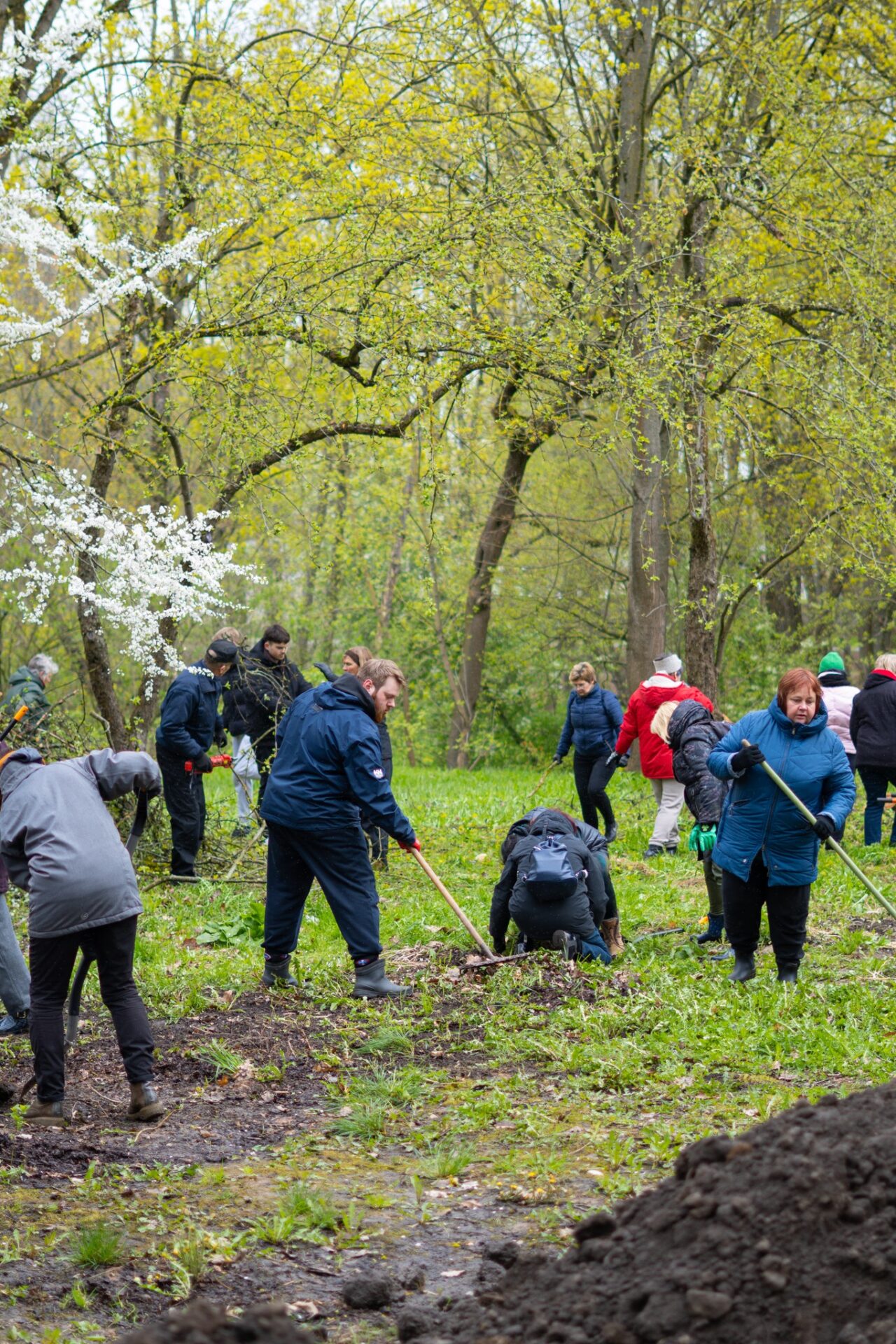
Photo from Pragiedruliai creativity centre archive
AS: Although Pragiedruliai is a branch of the Stasys Museum, it opened before the museum. Did you notice a change before and after the museum opened? How are the activities connected?
GL: After the opening of the museum, we noticed increased interest in cultural life in Panevėžys by both residents and visitors from other cities. We usually receive 600 to 700 individual visitors a month, not to mention large events and workshops. This number increased during the summer when the museum opened. With its exhibitions and the artist’s legacy, the Stasys Museum has brought an art context of international importance to the city, which is greatly appreciated by our visitors. Our cooperation includes organising joint events and creating thematic programmes in which we reveal different aspects of Stasys Eidrigevičius’ work. In cooperation with the museum, we try to make both institutions a continuation of each other: the museum provides a deep artistic context, and we offer to look at it through practical creative activities and participation. Also, several colleagues even work in both institutions: they are also an important connection.
AS: Since 2022 you have been supervising the Pragiedruliai residency programme. How do you attract residents? What selection criteria do you use?
GL: The residency programme is just getting started. We run one residency in the field of art and industry, presenting Panevėžys through music and industry. The artists prepared a one-hour video work, which was created in close cooperation with the old industry of Panevėžys, the industrial part of the city. The artists wanted to perform works and create a unique process on the roofs of industrial companies, filming from a bird’s-eye view. The artists even climbed up to the eleventh-floor roof with all the equipment and costumes!
Attracting residents is successful for several reasons. First, we try to create a programme that responds to topics that are important to today’s artists: the interaction of industry and art, the involvement of the local community, experimentation with different art forms. In our selections, we consider the creative potential and originality of the ideas of the artists, and their ability to integrate into our cultural and urban environment. Our community is smaller, so it’s easier for artists to feel and understand it, and to get involved in it themselves.
The selection criteria include the nature of the artist’s work, and the desire to explore the synthesis of industry and art, one of the core themes of our centre. We also appreciate the candidates’ motivation to include the Panevėžys city community in their work, thus contributing to the enrichment of local cultural life. Of course, we also highly appreciate the desire of artists who want to share their experience through workshops or ‘artist talk’ events, to be actively involved in educational activities. As curators of residencies, we aim not only to attract creators, but also to give them creative freedom and support, so that their ideas can fully unfold. We are not a museum, but a centre for creativity, and we make a space for artists to look at art and the community much more freely.
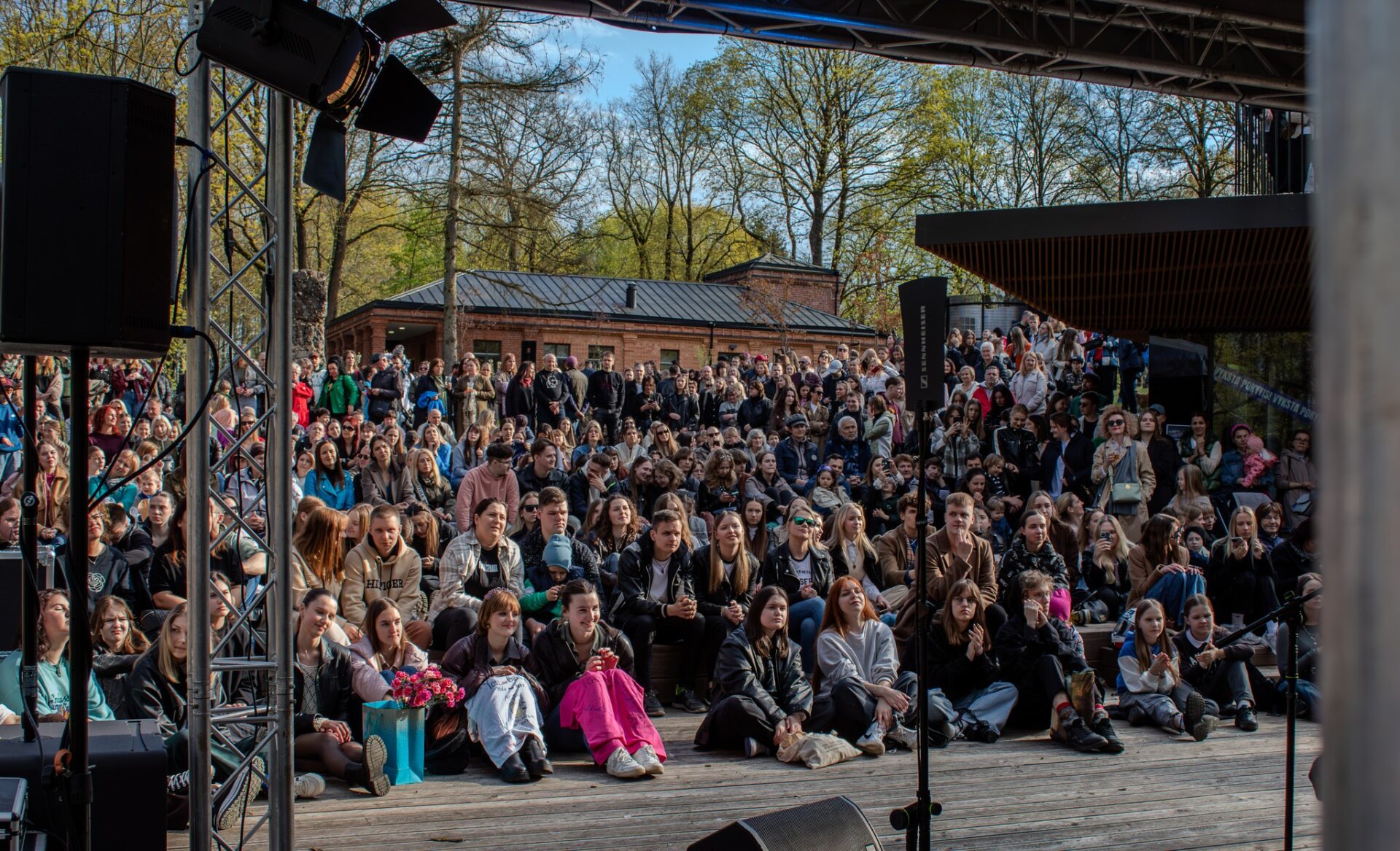
Photo from Pragiedruliai creativity centre archive
AS: Although industrial history is inseparable from the history of Panevėžys, you talk a lot about the residents of Panevėžys as creative people. How would you describe your visitors?
GL: Our visitors are a diverse and creative community, which is united by curiosity and the desire to discover new art forms and participate in creative processes. The audience is getting younger. I started working at the centre a year ago, and when I got involved in the activities I was surprised to see very young visitors, not only middle-aged and older people. There are many people still at school who want to find an impulse for their creativity. Many of them are also volunteers at the centre, they gain a lot of experience here, often purposefully choosing one of the studios operating in the centre. People are interested in discovering and contributing, they often come with their own ideas. However, the visitors are different ages and from different interest groups. Our audience is beautiful, diverse and rich. In addition, in recent years we have noticed a growing interest from professional artists, both from Panevėžys and from other cities, who are attracted by the opportunity to work with our residency programme, share their experience, and conduct practical classes or workshops.
AS: You mentioned artists working in other cities. A large part of the cultural activities in Lithuania are concentrated in the big cities, while Pragiedruliai represents the cultural activities of the Panevėžys region. What challenges and positive aspects do you notice from being a regional cultural centre?
GL: This is a unique challenge and an advantage. The main challenges are often infrastructural and logistical: the more remote location means an extra effort is needed to attract visitors and residents who may prefer big cities primarily for their convenience. It is also more difficult to reach a wider audience through the mass media, or to make quick connections with the wider cultural scene. However, this encourages us to be creative in organising both events and public activities, especially emphasising the uniqueness and the creative potential of the region. However, our more remote geographical location is one of our features. Here, at Pragiedruliai, artists can escape from the hustle and bustle of the big cities, and have a real creative residency experience: calm, inspiring, and allowing them to focus on their work. The history and industrial heritage of the Panevėžys region also provide a unique contextual medium for artistic projects that inspire local audiences and residents. The community of a smaller city is more open to close contact with artists, allowing them to participate directly in the art-making process and become co-creators.
We are very grateful to the local community, which actively supports us and participates in our events. We find that a smaller city allows for a more personal relationship with visitors, which creates a stronger, long-term basis of connection with the audience.
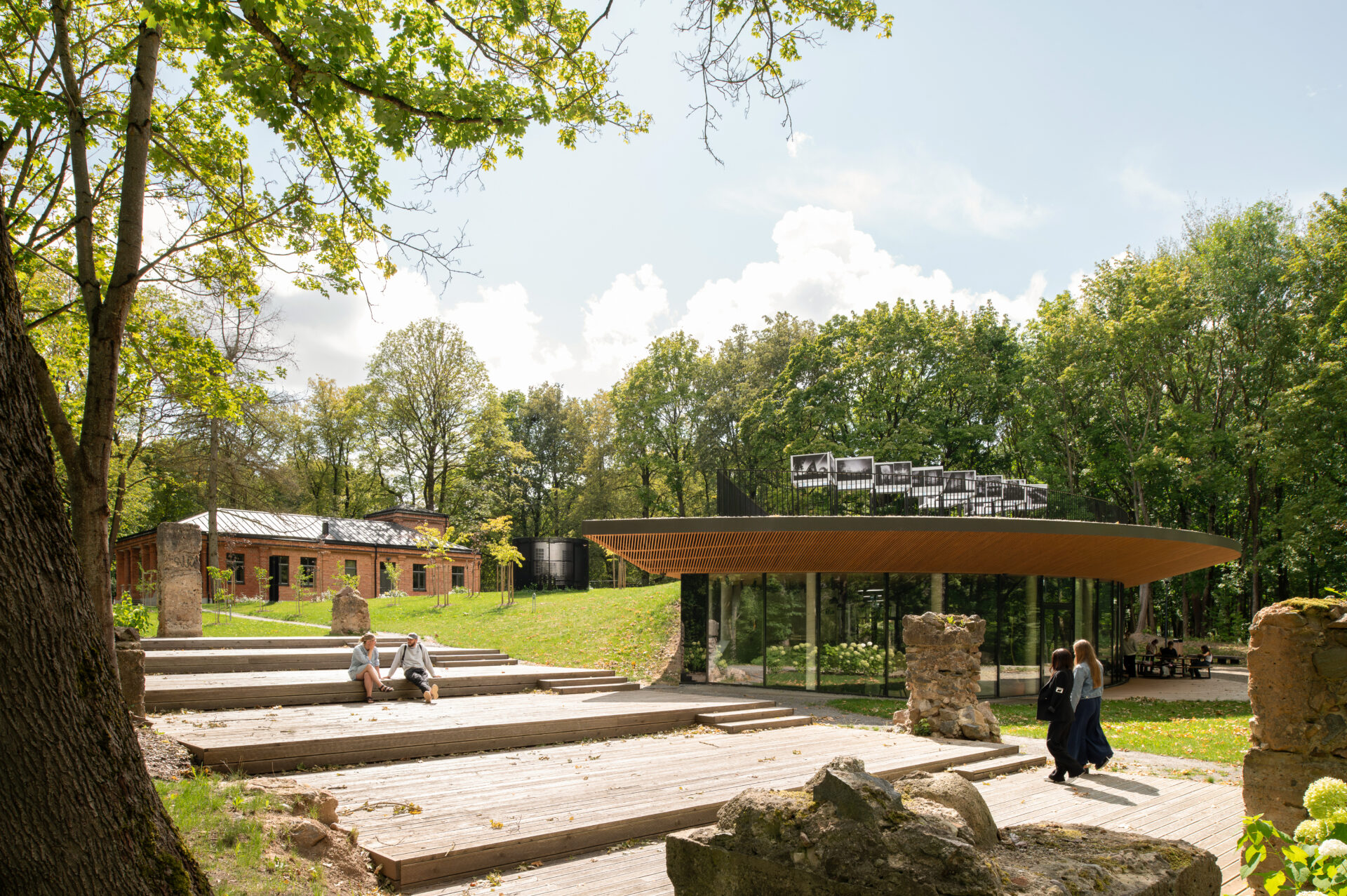
Pragiedruliai creativity centre. Photo: Aistė Rakauskaitė
[1] The project by the architects Tadas Jonauskis, Ignas Račkauskas, Lukas Kulikauskas, Augustas Makrickas and Justina Muliuolytė (PUPA / Life Over Space studio) was recognised as the best work of recreational architecture of the year at the ‘Zavišinių’ event organised by the Algimantas Zavišas Foundation.
